The Dark Truth of the Best Year in Video Game History
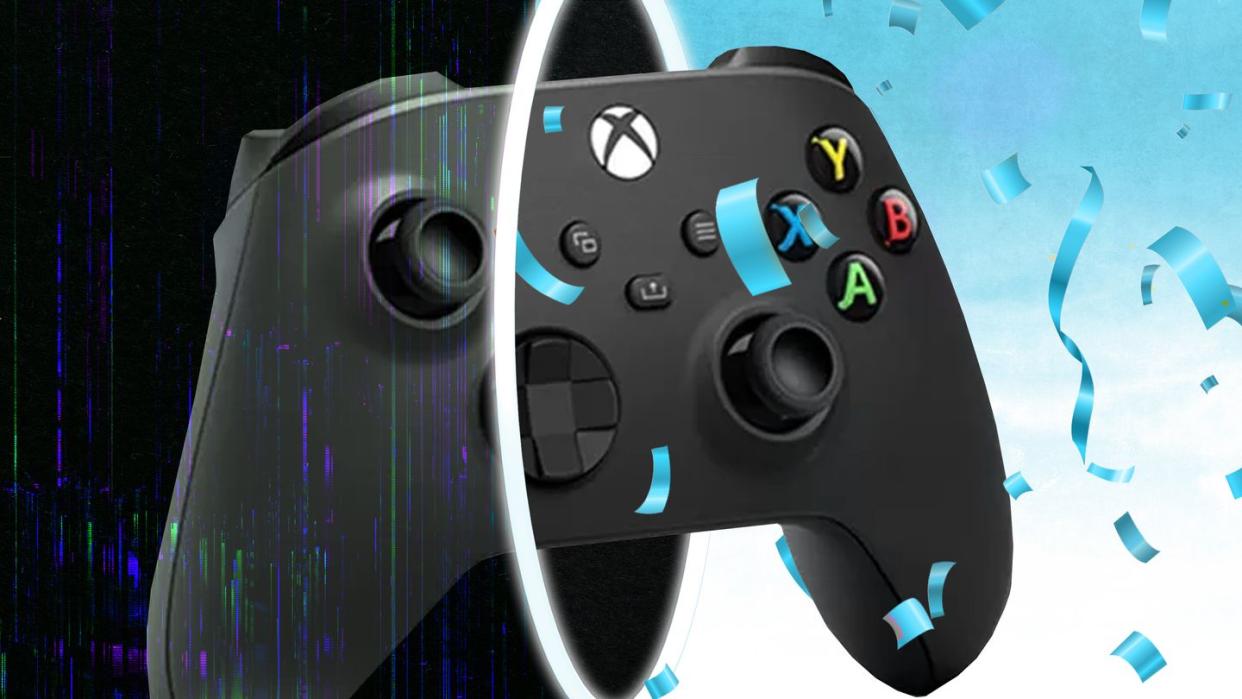
- Oops!Something went wrong.Please try again later.
- Oops!Something went wrong.Please try again later.
After 12 hours in transit, two connecting flights, and a meandering drive through millions of Douglas firs and ponderosa pines, I reach a small town near the border of Idaho and Washington State, where there are more woodpeckers than people. When I turn left down an unmarked road, one of the strangest structures I’ve ever seen comes into view: a brick-and-masonry edifice surrounded by an earthen moat, accessible only by a footbridge, through an arch that looks like it was torn off the front of the building by an angry god.
This is Cyan Worlds, the oldest surviving independent video game studio in America. Founded in 1987, it produced two of the best-selling and most influential games of all time in the '90s—Myst and Riven—which are still celebrated three decades later for their visual storytelling. I’m here because throughout 2023, gamers and industry experts have been openly wondering if this is the best year of all time for video games. It’s a dramatic superlative, sure, but the transparent number of well-received games that have hit consoles and PCs since January is staggering.
Esquire’s Game of the Year, Alan Wake 2, combined a Lynchian horror story with live-action film sequences and an unforgettable musical number. Baldur’s Gate 3, the role-playing game based on Dungeons & Dragons, took high-fantasy escapism to new heights. Bethesda’s long-awaited space epic, Starfield, was set across nearly 1,700 different moons and planets, making it the largest explorable universe ever built. I could keep going: Marvel’s Spider-Man 2, The Legend of Zelda: Tears of the Kingdom, Diablo IV, The Talos Principle 2, Lies of P, Star Wars Jedi: Survivor, and Assassin’s Creed Mirage, to name a few more.
At Cyan, I sit across a conference table from Rand Miller, the CEO and co-creator of Myst and Riven. I didn’t come all this way just because he’s been making video games longer than most people in America, but because I think many of 2023’s best games have something in common with Cyan’s classics in the '90s: a literary approach to narrative and environmental storytelling. In addition to the blockbusters I mentioned above, this year’s smaller and more experimental games—such as Cocoon, Chants of Sennaar, Jusant, and Cyan’s own Firmament—are built around narrative mysteries in addition to their logic puzzles.
Miller agrees. “Even the shooters are adding narrative in a way that feels inherent now, not just scabbed on like it used to be,” he says. But when I ask Miller if 2023 could be considered the industry's best year of all time, he has an answer that might surprise a lot of happy gamers.
“It’s been brutal.”

On the one hand, this year feels like a turning point for video games that could herald a new era, something akin to the “Peak TV” period that began with HBO’s The Sopranos in 1999. On the other hand, thousands of game workers were laid off in 2023 despite record-breaking sales figures, while many of their still-employed colleagues say they’re suffering from low pay, long hours, harassment, and discrimination—due in part to the fact that the video game industry has no national unions like Hollywood’s WGA and SAG-AFTRA to set benchmarks for wages, benefits, and working conditions.
So which is it? Are we entering a gaming renaissance that will rival the cultural impact of the golden age of Hollywood, or was 2023 just a fluke thanks to a pandemic-delayed backlog of titles? Are gaming CEOs driving away the bright minds of the industry’s future to make an extra buck today, or are we on the brink of a worker-led revolution?
It depends on who you ask.
Gamers and critics love to argue about the medium's best year of all time, but 2023 is the first serious contender since 2017, which delivered The Legend of Zelda: Breath of the Wild, Destiny 2, Super Mario Odyssey, Horizon Zero Dawn, Cuphead, and Resident Evil 7. However, most players would probably agree that this year’s Tears of the Kingdom is even better than Breath of the Wild, and Destiny 2 didn’t hit its stride until its Forsaken expansion the following year.
Before that, there was 2007 (Call of Duty 4: Modern Warfare, Halo 3, Portal, Rock Band, Super Mario Galaxy) and 2004 (Halo 2, Half-Life 2, Metal Gear Solid 3, Star Wars: Knights of the Old Republic 2, World of Warcraft). For… ahem… older gamers such as myself, there were earlier peaks in 1998 (Fallout 2, Half-Life, Metal Gear Solid, The Legend of Zelda: Ocarina of Time, Riven) and 1992 (Alone in the Dark, Final Fantasy V, King’s Quest VI, Mortal Kombat, Sonic the Hedgehog 2, Super Mario Kart, Wolfenstein 3D).
But if I was stranded on a desert island and could only play 10 games of my choosing from one specific year? It would be 2023, no hesitation—and I'm sure the past versions of myself in the '90s and '00s would agree if they could play this year’s slate of titles.
“2023 has been an unusually strong year for video game releases across the spectrum,” says Simon Parkin, a culture journalist featured in the new book Game Changers: The Video Game Revolution. He thinks there are several reasons for this year’s embarrassment of riches, but his primary catalyst is “the pandemic, whereby projects seeded and refined during the lockdown years have all blossomed at a similar moment in time.”
Jordan Minor, the author of Video Game of the Year who covers the industry for PC Magazine, agrees. “I’m still a big fan of years like 2017, 2007, and especially 1998. But 2023 felt like everything that had been building up during this new console transition, as well as the pandemic, finally [exploded] in a good way,” he says.
But even if 2023’s games had been equally spread across the past three years, they would still herald a shift for the medium. At the risk of oversimplifying a $365-billion industry that ranges from massive corporations to two-person passion projects, I think the main reason is story. Playing a great game with a compeling narrative used to be relatively rare. Back in the mid-'90s, after new technologies spawned an eruption of new genres, the commercial core of the gaming industry could have headed in one of two directions: Myst or Doom—a narrative-first experience that rewards exploration, or a combat-first experience that rewards fast-twitch muscle reflexes.
Clearly, major developers invested more in the Doom direction than the Myst direction over the ensuing decades, with the dominance of shooters like GoldenEye 007, Call of Duty, and Fortnite—as well as reflex-testing platformers like Super Mario descendants, Sonic the Hedgehog sequels, and Prince of Persia.
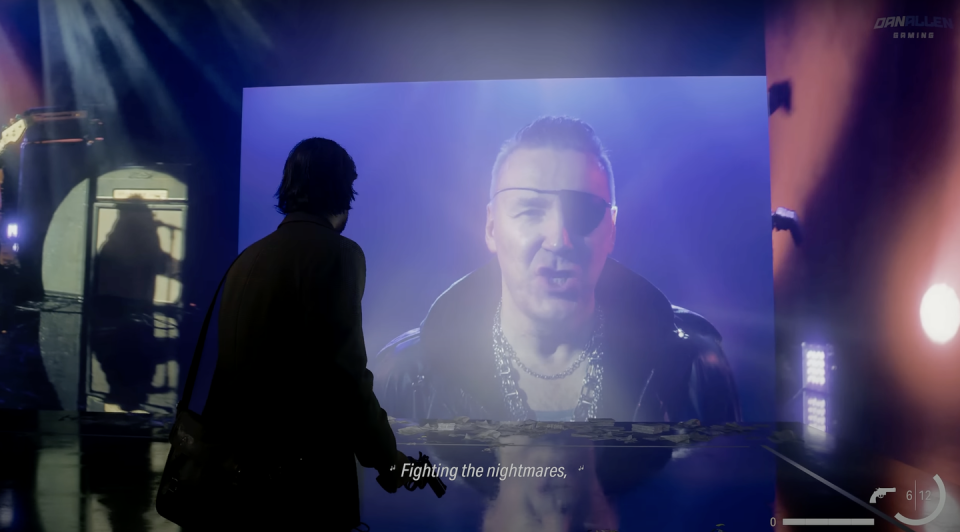
While narratively complex games certainly existed—and some even sold well, like The Legend of Zelda: Ocarina of Time or GTA V—most gamers didn’t spend much time thinking about what the characters were doing off-screen, and they certainly didn’t pick up a new game because they wanted to see what’s been going on in Mario’s life, or how the citizens of Green Hill responded to Dr. Robotnik’s latest environmental disaster.
But if you look closely, the gap between the Doom and Myst extremes has been closing the whole time, and video games have never been more narratively sophisticated than they are right now. Case in point: most people don’t just want to beat games anymore. They want to know what happens to the characters and better understand the world—just like readers of fiction, or people who watch a TV series for years.
In 2023, there are more narrative-driven games than ever before, and there may be no greater example than Esquire’s game of the year, Alan Wake 2. An epic survival horror and detective game set in the Pacific Northwest starring a Stephen King-esque novelist and an FBI agent investigating a mysterious “Cult of the Tree,” it incorporates filmmaking and written-word literature in ways no other game has ever done before.
“All these other mediums of storytelling can exist inside the world of a video game,” says Sam Lake, the game’s Finnish creative director. “The different art forms come together to create something that is more than the sum of its parts: a whole, deep, layered experience, seamless and fragmented at the same time, just as our lives are. And because it's interactive, the player is driving it, pacing it, immersed, fully engaged, eager to explore and sort out the elements, to chase the mystery of what the story is about. This is where the evolution of storytelling—something that is a core part of all of us—has led us.”
Live-service games are experimenting with new kinds of narrative as well. Destiny 2 first launched in 2017, but its ongoing story dates all the way back to 2013 with the release of the first Destiny. Joe Blackburn, the game director of Destiny 2 at Bungie, says story is a big part of what makes his team’s first-person shooter special. “We've been all-in on setting up the culmination of the 'Light and Darkness Saga,'” he tells me, referring to an intricate ten-year plotline that will be resolved in "The Final Shape," an expansion set to release next year. “We're excited to continue evolving the world of [Destiny 2], and we want 'The Final Shape' to stand alongside the best we've made in the entire series.”
Even the makers of the combat-forward Call of Duty: Modern Warfare III take story seriously these days. “This new release represents a first-ever back-to-back sequel for the campaign narrative that was set in motion last year,” says Johanna Faries, the GM for Call of Duty at Activision Blizzard. That’s a huge leap forward from Call of Duty titles in the 2000s, which were mostly concerned with inventing new ways to blow up the avatars of complete strangers over DSL.
Still, video games still have a lot of room to grow as a narrative medium. “Much of the writing within games sits far below the bar set in other media,” Parkin says. “It is almost impossible to imagine a video game written with the same whip-smart dialogue of, say, a Succession—and likewise we are a long way from seeing a game rival a prestige TV series in terms of the column inches written about it.”
But some critics would have said the same thing about television before the era of Peak TV, when cable and streaming companies invested in writer-driven projects like The Wire, Mad Men, and True Detective to attract new audiences. If video game companies are starting to make similar investments, is the era of Peak Video Games right around the corner? What will The Sopranos of video games be—and have we already played it?
“While video games are undeniably the most widely enjoyed entertainment medium around, there are still significant obstacles to their becoming culturally impactful,” Parkin says. “Most games are quite annoying to play, impenetrable to newcomers, tonally discordant, and exasperatingly fixated on guns. I love video games and have spent much of my professional life covering them, but I don’t think it’s particularly helpful to suggest we are in a golden age when there is still so much good and important work to be done.”
After 2023, the bigger question might be: How many people will still be around to do the good and important work?
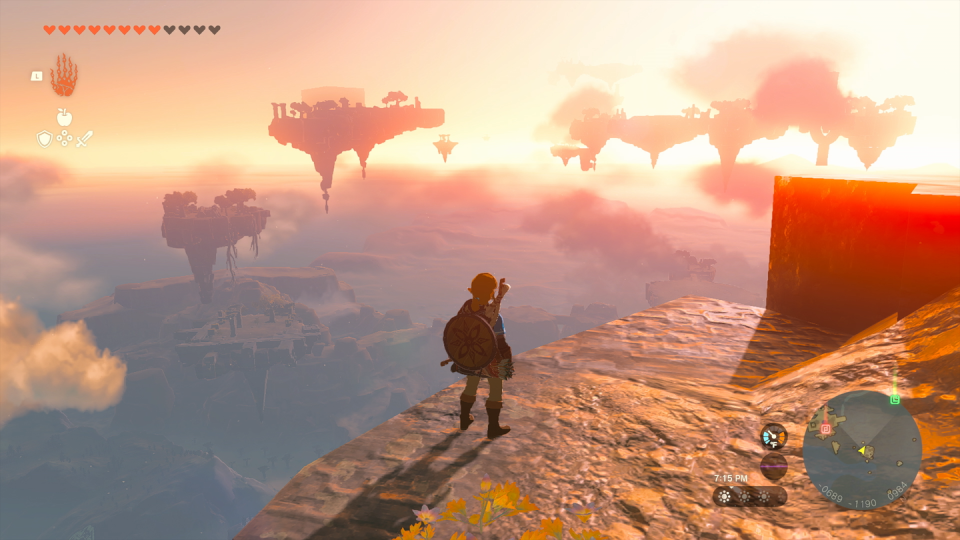
Unlike Hollywood movies, no one knows exactly how much money individual video games make (no one outside of a studio’s C-suite, that is). But Mat Piscatella, Executive Director & Video Game Industry Analyst at Circana, says the global video game industry had raked in $49 billion in 2023 as of late November. That’s a one percent increase over 2022, and almost $18 billion more than movies have generated at the worldwide box office in 2023, according to the analytics firm Gower Street.
And yet, layoffs have pummeled the video game industry this year, with Farhan Noor, a technical artist who’s been tracking layoffs since January, estimating that at least 9,000 people have lost their jobs. Many of those layoffs occurred at the very same companies where some of 2023’s best games, seasons, and expansions were made, including AAA releases like Starfield (Bethesda), Star Wars: Jedi Survivor (EA), Assassin’s Creed Mirage (Ubisoft), Diablo IV (Activision Blizzard), Destiny 2: Season of the Witch (Bungie), and Cyberpunk 2077: Phantom Liberty (CD Projekt Red).
For many game workers, the math doesn’t add up.
“Some of the executives make multi-million-dollar salaries while my co-workers are starving themselves,” says Dianna Lora, a senior licensing producer who was laid off this year. “More of that money needs to come down to those of us who are effectively making them that money.”
During the first year of the pandemic, Activision Blizzard CEO Bobby Kotick was paid $155 million and EA CEO Andrew Wilson was paid $21.4 million in compensation packages, according to SEC filings. Meanwhile, ZipRecruiter estimates the average annual income for US game workers is $38,600, compared to $68,310 for the movie industry. Of course, those averages are skewed by hourly contractors and workers at tiny independent studios, so they don’t likely reflect average full-time salaries at larger studios like Activision Blizzard, EA, or even Cyan.
The most notable exception to the layoff trend is Nintendo, makers of The Legend of Zelda: Tears of the Kingdom in Japan. “If we reduce the number of employees for better short-term financial results, employee morale will decrease,” former Nintendo CEO Satoru Iwata told investors a decade ago. “I sincerely doubt employees who fear that they may be laid off will be able to develop software titles that could impress people around the world.”
Iwata died in 2015, but his successors haven’t changed tack. This February, despite reporting a 23 percent year-over-year decrease in quarterly Switch sales and lowering its annual profit forecast, Nintendo announced a 10 percent pay raise for its employees instead of laying them off.
“Unlike in many western studios, young designers [at Nintendo] can learn from their seniors, hone their skills over decades within the same company, all without fearing they will be let go the moment the current project is completed,” Parkin says.
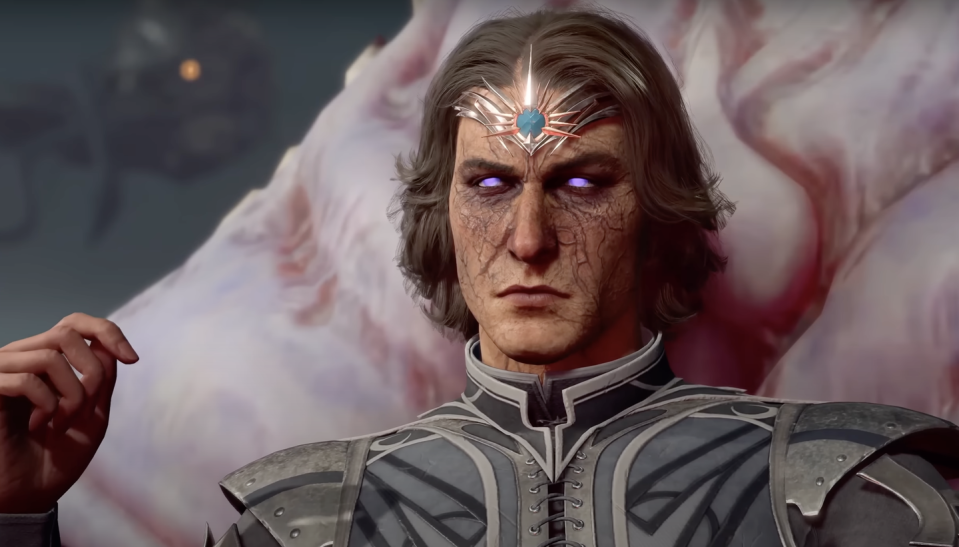
But most video game studios don’t follow Nintendo’s model, and layoffs aren’t the only reason workers suffered so much in 2023. “The gaming industry makes more money than the movie industry, but there’s a lot of abuse, exploitation, and greed in video games,” adds Lora.
According to hundreds of workers surveyed by GameWorkers.org earlier this year, “unfair pay disparities within singular job titles, lack of retirement security, pressure to work unpaid overtime, low wages, burnout, and exhaustion were widespread and commonly reported,” while “less than half make it to their seventh year working in the industry.”
As a result, many video game workers have seen 2023 as a rallying cry. While the entertainment business as a whole has a long history of unions—like when theater workers formed the International Alliance of Theatrical and Stage Employees (IATSE) to establish minimum pay rates and maximum working hours way back in 1893—the video game industry has no equivalent to Hollywood’s nationwide unions, like the WGA and SAG-AFTRA, and only a handful of small, individually unionized game studios.
But in 2023, “there’s been a surge of interest in organizing because game workers are some of the worst-treated folks in the entertainment industry,” says Chrissy Fellmeth, the Video Games Organizer at IATSE, which added its first game studio this year. “Ultimately, we’re hoping to achieve a national game worker union that covers folks from coast to coast. There would be a master agreement that all studios in the U.S. would abide by as a template, which would set standards for pay, job classifications, health insurance, and pensions.”
Meanwhile, more than 200 SEGA employees and around 300 ZeniMax workers formed their own unions this year under a different parent organization, the CWA. “We’ll probably keep seeing unions organized on a studio-by-studio basis for now, but over time it would be wonderful to bring multiple companies to the table and bargain collectively,” says Emma Kinema, a senior campaign lead at the CWA.
While unions can’t prevent layoffs, Fellmeth says they make the transition between jobs much easier and improve severance packages. “A great point of inspiration is the animation guild, where folks can travel between jobs and take their health insurance and their pension plan with them, and not have to worry about what happens in between jobs, [whether] you’re on staff or a 1099 freelance worker.”
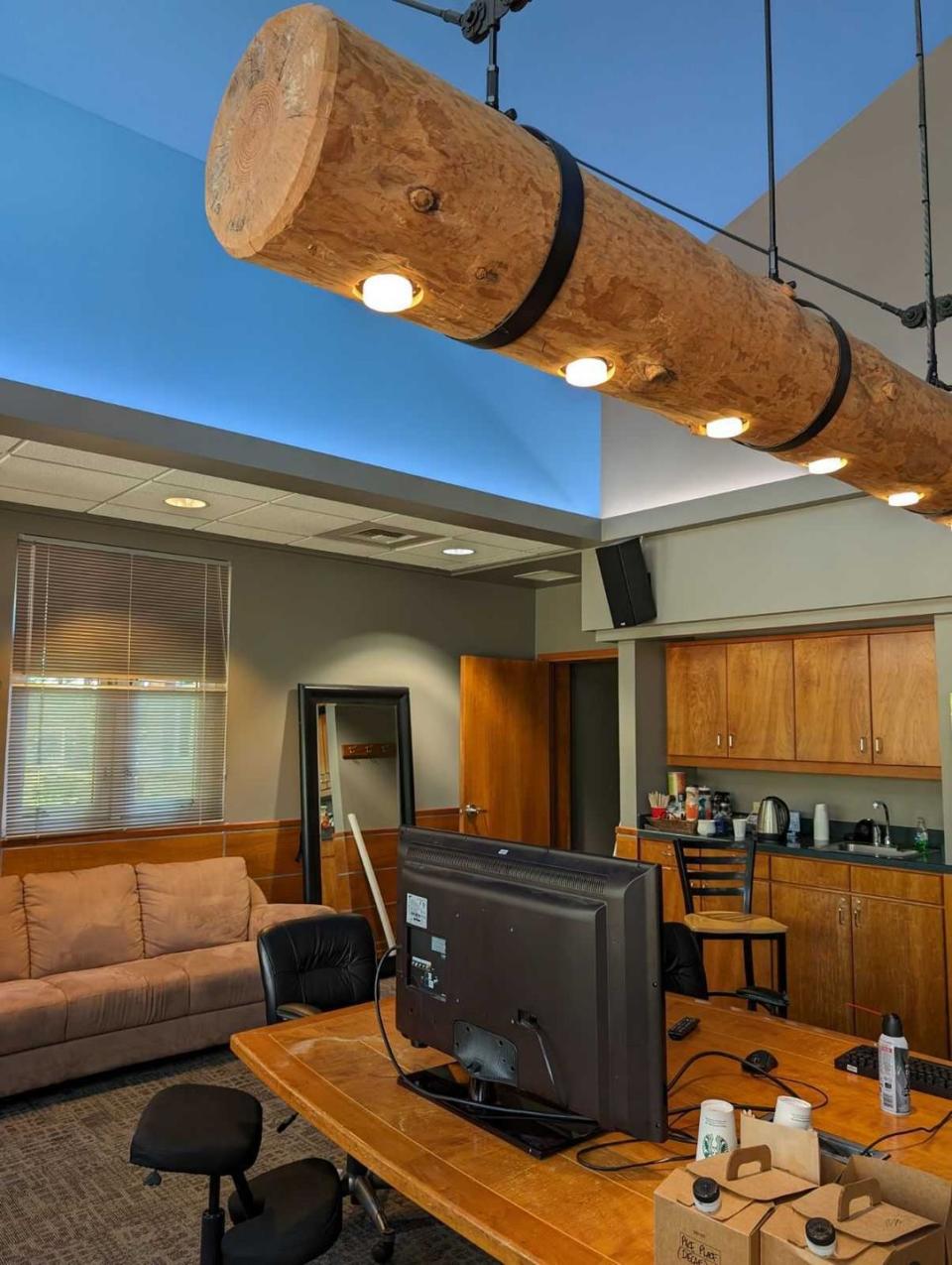
None of the video game workers I spoke with for this story were comfortable going on the record about unions. “We shouldn’t have to fear retaliation because it’s illegal,” one of them told me on the condition of anonymity, but nevertheless, the fear is very real.
“Game workers are terrified that they’ll lose a job they’ve worked their whole lives for, or they’ll end up on a mysterious blacklist and never work again,” Fellmeth says. “But under the National Labor Relations Act, you’re allowed to talk to your co-workers about unionism [and salaries], and to give a union representative a list of your co-workers, and you’re protected if your employer retaliates against you [for doing any of these things].”
Also in 2023, journalists who cover the video game industry were laid off in droves at The Washington Post, Inverse, GameSpot, Fanbyte, Giant Bomb, Vice, Kotaku, and other outlets. “In media, we’re seeing this push towards exponential year-over-year growth, which is not how newspapers and magazines and websites tend to work,” says Jen Glennon, Kotaku's new editor-in-chief, who ran Inverse’s gaming vertical until earlier this year. “The more industries that we try to force into this startup format, the more we're going to see spurts of expansion and contraction as trends come and go.”
With fewer journalists reporting on the industry, some workers are concerned there will be less transparency and accountability for studios that mistreat their employees. “We’ve started to see a lot of [media] coverage on the negative side of the industry and poor working conditions, not just the bright and shiny side of all the money being made,” says Kinema.
Still, every single person I spoke with for this story—from Rand Miller in the wilds of Washington State to Chrissy Fellmeth in the heart of New York City, and from current leaders at major studios to folks who just lost their jobs—is optimistic about the future of video games and the people who make them.
“I do think we’re heading into a golden age,” Glennon says. “There’s an overall sense of excitement for what the future holds, and there’s so much innovation and wonderful storytelling happening in this [industry].”
Minor agrees. “The biggest thing that gives me hope now is seeing more places unionize, not just game websites but game developers,” he says. “We need to give [game workers] the respect and protection they deserve in order to survive and thrive. If companies won’t give that job security, the labor movement and its collective power must take it.”
Back in Spokane, through the windows behind Rand Miller, I watch a Northern Flicker woodpecker flit between the trees and the eaves of Cyan’s headquarters.“If the ‘90s was the beginning of narrative-rich gaming, maybe it just took a new generation to push that forward,” he says.
Now 64 years old, Miller tells me he’s going to retire soon, and that his stepdaughter, Hannah Gamiel, will be one of the people to lead the next generation of Cyan. “My heart breaks into a million pieces for all the people who lost their jobs this year,” Gamiel says, but like everyone else I spoke with, she’s hopeful for the future of the industry.
I’ll be honest: 2024 doesn’t look like a particularly rosy year for video games, at least not yet. Just the other day, ransomware hackers leaked more than a terabyte of sensitive files—including employees’ personal data, like passport scans—after failing to blackmail Insomniac Games (Marvel’s Spider-Man 2) for $2 million. The most beloved live event in industry history, the Electronic Entertainment Expo (E3), announced earlier this month it was shutting down for good. The closest thing we have to an Oscars ceremony for video games, Geoff Keighley’s The Game Awards, has devolved into a transactional parody of itself that’s more interested in showcasing Hollywood celebrities than celebrating game developers.
Still, we already know 2024 will bring Star Wars Outlaws, Final Fantasy VII Rebirth, Destiny 2: The Final Shape, Senua’s Saga: Hellblade 2, Avowed, and a cozy game set in Middle-Earth called Tales of the Shire that I’m already unhealthily obsessed with. Perhaps even more exciting are the things that could hit next year, like Elden Ring: Shadow of the Erdtree, Starfield: Shattered Space, or Cyan’s reimagining of Riven with all-new locations, puzzles, and lore.
Plus, in the last few weeks alone, Halo Infinite and Forza Motorsport QA workers voted to unionize under the International Association of Machinists and Aerospace Workers, 77 contractors at ZeniMax joined the CWA and became full-time employees with better benefits, and Microsoft reached a tentative agreement with its U.S. union on six “guiding principles” for how the company will (and won’t) use AI.
For my money, 2023 was the best year of all time for video game releases, even if it was one of the worst years for the workers who make them and journalists who write about them. But I'd rather play shorter, smaller games made by people who aren't exploited or tossed aside as soon as a game arrives in the world. If the industry's working conditions don't improve, the golden age of video games will only be a gilded one.
You Might Also Like

